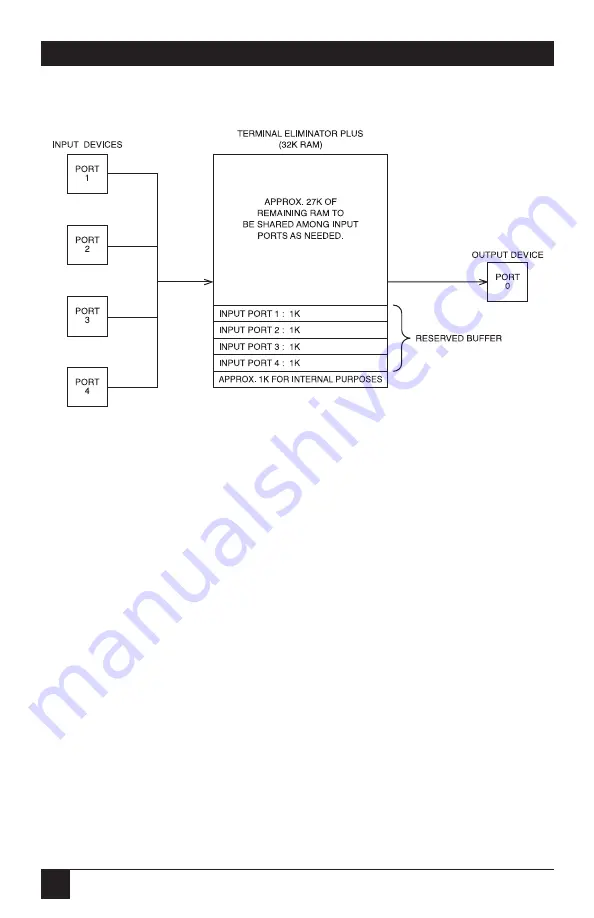
44
TERMINAL ELIMINATOR PLUS
5.4 Buffer Allocation
A standard Terminal Eliminator Plus has 32K of RAM, with approximately
1K dedicated to program “self-storage” and 31K of RAM available for buffer
space.
A TEP with the 32K Memory Expansion chip installed has 64K of RAM,
with approximately 5K dedicated to program “self-storage” and 59K of RAM
available for buffer space.
The TEP uses a dynamic buffer. Each input device is given a minimum of
1K of RAM reserved exclusively for that port. In this way, a single port cannot
monopolize all the Terminal Eliminator’s buffer space. The remaining
memory is distributed among all active ports according to the current
demand. If each port were given an equal amount of the total buffer space
and some of the ports were inactive, there would be a great deal of wasted
buffer not available for use. Dynamic allocation provides far more efficient
use of buffer space. Figure 5-2 on the next page illustrates the principle of
dynamic allocation, using the standard unit with 32K of RAM as an example.
Fig. 5-2. Dynamic allocation of 32K of buffer space.












































